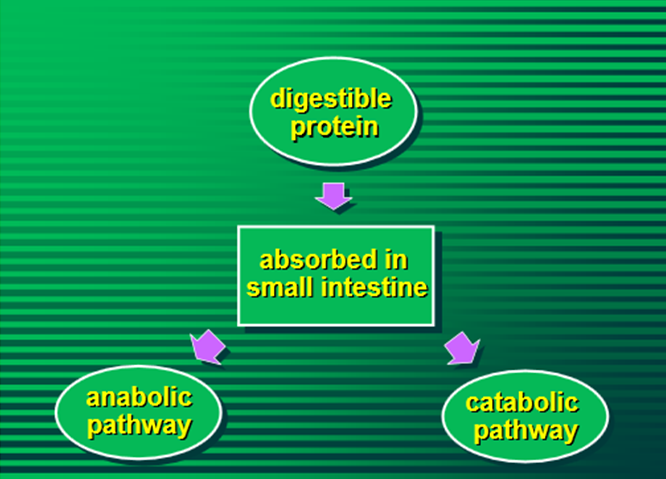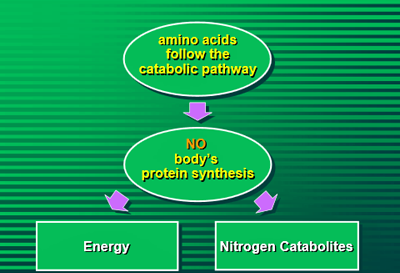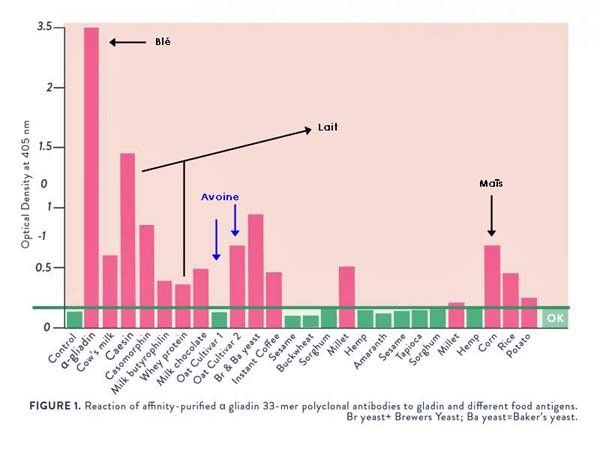Do we count gelatin/collagen protein towards total daily protein/macro?
-
I learned in the past we don't count collagen protein towards total daily protein because they are incomplete, but I'm asking again to my self that question.
what do you guys think and why? what would Ray Peat say about it?
-
@GRay no just add it on
-
@GRay said in Do we count gelatin/collagen protein towards total daily protein/macro?:
I learned in the past we don't count collagen protein towards total daily protein because they are incomplete
I won't say it so. Why? You could say the same with rice or pasta. But if you add some legume (peas or lentils), you complete the profile (deficit in lysine).
When getting older (45-50 yrs) the amount of collagen can be higher, up to 50 % if desired. You no longer metabolize in the same way.Collagen powder intake:
If pure glycine: approximately 8 to 15 g per day (+/ 10 g for 70 kg / 140 Lb)
https://www.julienvenesson.fr/quels-sont-les-bienfaits-de-la-glycine-en-complement-alimentaire/If hydrolyzed collagen: 20 gr per day
https://www.julienvenesson.fr/faut-il-se-supplementer-en-glycine-ou-en-collagene/ -
How Much Glycine Do We Need? (According to Chris Masterjohn)
“Estimates of how much dietary glycine we need range from 10 grams per day to 60 grams per day. Our needs are probably closer to 10 when we are in good health and closer to 60 when we are in poor health. In terms of what has been studied in humans, we can say the following:
• 3-5 grams of glycine before a meal helps stabilize blood sugar.
• 3 grams of glycine before bed helps improve sleep.
• 15 grams of gelatin before a workout helps improve collagen synthesis in our joints.
• 20 grams of glycine per day is used to treat some rare metabolic disorders.
• 60 grams of glycine per day has been used to treat schizophrenia.
If you were to add up the glycine from all of the specific uses you might use it for, it would all fall into the estimated 10-60 grams per day we need.”How Much Glycine Do We Need to Balance Methionine?
“We do not have any rigorous human studies showing how much glycine we need to eat to make up for a given amount of methionine. We know, however, from biochemistry that methionine depletes glycine, and we know that our ancestors consumed much more glycine than we do.
The biochemistry predicts that every gram of methionine would increase our needs for glycine by 0.5-1 gram.”Article from RP Forum – By Mito, Jun 29, 2018.
https://raypeatforum.com/community/threads/balancing-methionine-and-glycine.24580/
NB: Keep in mind mitochondria contain a glycine cleavage enzyme that wastes excess glycine to ammonia, said Therma. -
@GRay I think if you take it along with a meal (containing for example meat, milk(dairy) or eggs) it would count
-
@LucH said in Do we count gelatin/collagen protein towards total daily protein/macro?:
@GRay said in Do we count gelatin/collagen protein towards total daily protein/macro?:
I learned in the past we don't count collagen protein towards total daily protein because they are incomplete
I won't say it so. Why? You could say the same with rice or pasta. But if you add some legume (peas or lentils), you complete the profile (deficit in lysine).
When getting older (45-50 yrs) the amount of collagen can be higher, up to 50 % if desired. You no longer metabolize in the same way.Collagen powder intake:
If pure glycine: approximately 8 to 15 g per day (+/ 10 g for 70 kg / 140 Lb)
https://www.julienvenesson.fr/quels-sont-les-bienfaits-de-la-glycine-en-complement-alimentaire/If hydrolyzed collagen: 20 gr per day
https://www.julienvenesson.fr/faut-il-se-supplementer-en-glycine-ou-en-collagene/I think I learned this within the fitness circles, because studies looking at muscle protein synthesis only incorporate proteins that have all the essential aminos. So protein needed to rebuild tissues and be available for body protein as well needs to be comprise of all essential aminos.
But looking at the final macronutrient intake, it would make sense to incorporate collagen protein into the final tot count, since they also have calories
-
@GRay said in Do we count gelatin/collagen protein towards total daily protein/macro?:
studies looking at muscle protein synthesis only incorporate proteins that have all the essential aminos. So protein needed to rebuild tissues and be available for body protein as well needs to be comprise of all essential aminos.
Amino acid complementarity in metabolic availability
Complementarity in metabolic availability of difference sources of proteins
Combining rice and lentils provides a complete profile of essential amino acids. Rice is low in lysine, an amino acid that lentils are rich in, while lentils are low in sulfur-containing amino acids like methionine and cysteine, which rice provides. Therefore, when these two foods are combined, they offer all the essential amino acids the body needs.
Source: sciencedirect.com
The content and MA (metabolic availability) of methionine are low in lentils. However, combination of lentils with rice in a 1:1 ratio can improve the protein quality of lentil-based diets, resulting in increased protein synthesis in young healthy adults. This trial was registered at www.clinical trials.gov as NCT03110913.
DOI: 10.1093/jn/nxac049
NB: Digestibility may overestimate bioavailability of some amino acids particularly those more susceptible to heat and processing. So, we have to take into account the way we prepare a meal (to limit amino acid oxidation / alteration).
Lysine is the most vulnerable to heat damage, particularly in overheated foods. So don’t cook lentils in a pressure cooker.
Useful info on protein biodisponibility
Net Nitrogen Utilization (NNU) for Body Protein Synthesis (BPS)
A protein’s NNU (%) is the unit of measurement for Body Protein Synthesis (BPS). It is the percentage of a protein’s constituent amino acids following the anabolic pathway to act as precursors for BPS. A protein’s NNU (%) can be calculated through a methodology known as “Body Nitrogen Balance”.
When we read that protein supplement has 99% Net Nitrogen Utilization (NNU), this means that 99% of the amino acids constituents follow the anabolic pathway to act as precursors, or “building blocks”, for Body Protein Synthesis (BPS), thus becoming body’s constituent proteins.
Net Nitrogen Utilization for Body Protein Synthesis (BPS)
Digestibility of proteins, hydrolyzed in the digestive tract, thus releasing its constituent amino acids in the first 100 cm of the small intestine, where they are absorbed. Then those amino acids can follow either the anabolic or the catabolic pathway.
*) BPS => anabolic & catabolic pathway
Figure

As primary function amino acids are following the anabolic pathway to act as precursors of BPS (Body Protein Synthesis). These amino acids are becoming building blocks / constituents of the body.
Throughout the anabolic pathway neither energy nor nitrogen are released.
*) Catabolic pathway = energy (+ toxic waste if in excess)
When amino acids are following the catabolic pathway, they are deaminated to serves as energy. Nitrogen & catabolites are then released (urea & purine derivatives).
Figure 2

*) AAA > < CAA
When the majority of amino acids are metabolized / anabolized, there is less nitrogen released and thus less toxins.
The higher the percentage of AAA, the lower the percentage of CAA. And vice versa.
AAA = Anabolized Amino Acids
CAA = Catabolized Amino Acids
More details on this link:
http://masteraminoacidpattern.info/onlineLearning/printable/SON_Formula_Presentation01.pdf -
@LucH this may open another discussion how the biological value of plant protein even if combined, is lower than animal meat, also often less bioavailable due to antinutrients in plans, therefore, protein requirement in this case may increase substantially.
this is a study that makes me think we should not count collagen protein towards total protein count.
Hydrolyzed collagen (gelatin) decreases food efficiency and the bioavailability of high-quality protein in rats
https://www.scielo.br/j/rn/a/rqgGY3nmTttgRtfNy9vmgWb/
Abstracts
Objective Although deficient in all indispensable amino acids, gelatin is used in protein-restricted diets. Food efficiency and protein quality of casein and gelatin mixtures in low protein diets in Wistar rats were investigated.Methods The rats were treated with protein-restricted diets (10.0 and 12.5%) containing casein (control diets), casein with gelatin mixtures (4:1 of protein content), and gelatin as sources of protein. The food conversion ratio, protein efficiency ratio, relative and corrected protein efficiency ratio, true protein digestibility, and hepatic parameters were estimated.
Results After 28 days of the experiment, food efficiency of 10.0% casein/gelatin diet decreased when compared to that of 10.0% casein diet, and the protein efficiency ratio of the casein/gelatin mixtures (10.0%=2.41 and 12.5%=2.03) were lower than those of the casein (10.0%=2.90 and 12.5%=2.32). After 42 days of the experiment, the weight of the liver of the animals treated with 10.0 and 12.5% casein/gelatin diets, and the liver protein retention of the 12.5% casein/gelatin diet group of animals were lower than those of the control group.
Conclusion Gelatin decreases food efficiency and high-quality protein bioavailability in protein-restricted diets.
-
@GRay said in Do we count gelatin/collagen protein towards total daily protein/macro?:
- this may open another discussion how the biological value of plant protein even if combined, is lower than animal meat, also often less bioavailable due to antinutrients in plans, therefore, protein requirement in this case may increase substantially.
- Conclusion Gelatin decreases food efficiency and high-quality protein bioavailability in protein-restricted diets.
- Well seen.
- I won't trust this study. Why? the type or protein used and the way it has been done.
a) casein induces an immune reaction, by everybody, even if you don't perceive it. The reaction is high by 50% people (cross-reaction with the agglutinin from whey).
b) collagen contains glycine and proline that are fragile. So, susceptible to be altered in the manufactured process. - The experiment has given bad results in the experience: weight loss of the liver in the two cases.
- A test is not supposed to be done with powder extract to prove anything!!!
-
Re: Do we count gelatin/collagen protein towards total daily protein/macro?
Short answer: yes if you have it with any of the following: meat/milk/dairy/eggs -
@LucH said in Do we count gelatin/collagen protein towards total daily protein/macro?:
a) casein induces an immune reaction, by everybody, even if you don't perceive it. The reaction is high by 50% people (cross-reaction with the agglutinin from whey).
b) collagen contains glycine and proline that are fragile. So, susceptible to be altered in the manufactured process.interesting, this would go against Ray Peat I believe. Do you think all Casein can cause an immune reaction, even those contained in a A2 dairy? do you have any study to reference?
I heard Ray Peat in a podcast saying the opposite on Gelatin actually, and being pretty safe. He was more concerned about the fragility of the process used to make whey protein.
-
After thinking a bit, this is my thought as now:
Even if gelatin is mixed with high biological value protein like animal protein, it still shouldn't be counted towards total daily protein goal, because it is poor in BCAA.
Then, for the sake of total daily calories counting and macro, yes it can, or maybe should be counted.
-
@GRay .. reading things like this on the old forum makes me think it can count (keeping in mind that best to get one s glycine etc from food (oxtail, shanks, wings and the like)):
Post in thread 'Glycine Is Directly Anabolic AND Anticatabolic For The Muscle'
https://lowtoxinforum.com/threads/glycine-is-directly-anabolic-and-anticatabolic-for-the-muscle.21353/post-318948“.. Peat said that 60%-70% of the daily protein can be form gelatin without creating any protein deficiencies or compromising tissue recovery or muscle growth.”
[- haidut] -
@GRay said in Do we count gelatin/collagen protein towards total daily protein/macro?:
Do you think all Casein can cause an immune reaction, even those contained in a A2 dairy? do you have any study to reference?
I heard Ray Peat in a podcast saying the opposite on Gelatin actually, and being pretty safe. He was more concerned about the fragility of the process used to make whey protein.
- A2 is easier to digest and give less problems.
See the book from Dr Jean-Marie Poinsignon:
« Rhumatismes : et si votre alimentation était coupable ? »
https://mirzoune-ciboulette.forumactif.org/t542-rhumatisme-et-si-votre-alimentation-etait-coupable?highlight=rhumatisme
- the book "Lait, mensonges et propagande" - nouvelle edition, Thierry Souccar, Henri Joyeux.
https://www.nutristore.fr/sans-gluten-et-sans-lait/lait-mensonges-et-propagande-nouvelle-edition-thierry-souccar-273
I can give a more developed theory to explain why an immune reaction, according to weakness of the ground ...
- Gelatin when well-processed is safe. RP spoke about contamination, I think.
If bought by a specialist, I'll trust it as safe.
See the figure (lait = milk = whey or casein)

- A2 is easier to digest and give less problems.
-
Thanks for attaching this. I think I might actually have seen this data many years ago, but did not remember at all.
It definitely opens my mind again on including collagen protein towards total daily count for protein.
Dr Mercola recommends 20 to 30 % of tot protein coming from collagen, perhaps this may be a good idea after all.
-
Not sure why you wouldn't count it unless you're running along that line of thought that FGF21 (which supposedly isn't suppressed by glycine) is important for metabolic health. Which I guess it is, but the debate seems to be is it good to activate or good to suppress. There seems to be well thought out arguments on both. Jay Feldman giving a pretty damning criticism of it. Of course, you got Anabology on X and the "emergence diet" guy (where I think the initial spark of this actually got popular at) endorsing it wholeheartedly.
For all the other reasons one might want to limit protein, like prioritizing glucose oxidation, lowering ACTH/cortisol, etc. I think counting gelatin in total protein consumption seems to make the most logical sense. It's not like not counting it is going to improve glucose retention of any kind. Basically all protein can powerfully drain liver glycogen if you eat it without sugar/carbohydrate. I would think evidence of glycine substantially increasing growth hormone is supportive of that.
-
@GRay Also, if it helps anyone, Ray Peat said about gelatin, “It’s important that it be very thoroughly dissolved for good digestion“ (ie eg downing a packet of dry gelatin powder in your mouth may not be the best idea):
Post in thread 'Ray Peat Email Advice Depository'
https://lowtoxinforum.com/threads/ray-peat-email-advice-depository.1035/post-875279“
Q: Hello Dr. PeatI was wondering where you stand with Gelatin supplementation…
…I've bought some high quality gelatin supplements…
Does it have downsides…do you have any advice on how..to take [it]?
…
RP: It has various therapeutic effects. It’s important that it be very thoroughly dissolved for good digestion.
“ -
This post is deleted! -
@16characterstwas thanks